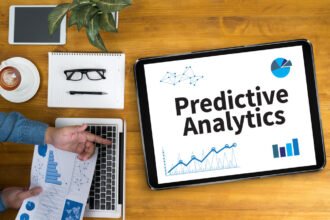, and it’s finding its way into a multitude of industries and applications. One of the most fascinating big data industries is manufacturing. In an environment of fast-paced production and competitive markets, big data helps companies rise to the top and stay efficient and relevant. Manufacturing innovation has long been an integral piece of our economic success, and it seems that big data allows for great industry gains. Improvements in efficiency, maintenance, decision-making and supply chain management are possible with the right data tools. Anything from staff schedules to machine performance can be improved with big data.
Decreasing Inefficiency With Big Data
Manufacturers are always looking for ways to make marginal improvements in their systems and how they operate. This type of management can be complex, and with the many different steps of the supply chain, teasing out every last detail to improve can be challenging. Thankfully, with big data, manufacturing companies can competently manage supply chain details in order to oversee any possible improvements available. Big data allows manufacturers to look at each discrete part of a supply process. This microscopic view of the supply chain can show managers new insights into how their process can be improved or tweaked. Big data can be used in different ways to cut down on supply chain inefficiencies. Individual machines, supply chain setup, and staffing, among others, are all components of a manufacturer’s efficiency. More and more manufacturers are closing gaps in inventory inefficiencies, too. For example, some 72% of manufacturers consider real-time monitoring essential for modern inventory reconciliation.
Managing Supply and Customization
Taking the customer’s preferences into consideration when configuring the manufacturing processes is of extreme importance. The need for consumer customization is a challenge for supply chain managers. Cookie-cutter solutions don’t apply to consumers anymore. They want and need customized products and services. However, in most scenarios, added customization equals added costs. Big data can help bridge that gap of wanting to appease customers while making ends meet at the same time. With advanced data analytics, manufacturers can see customer data in real-time. This reduces the time required to make necessary adjustments to the product lines, cutting down on wasted time and improving overall efficiency. One of the largest effects of real-time monitoring in manufacturing is the ability to improve order-to-fulfillment cycle times. Building a robust data platform can transform the way manufacturers handle their customers and supplies. Not only are real-time results available, but big data can also provide demand forecasts to guide the production chain based on historical data sales trends in order to stay on top of the demand.
Predictive Maintenance
One way to reduce the amount of downtime spent on fixing manufacturing machines is fixing the machines before they break. The ability to monitor manufacturing assets in order to predict necessary maintenance is another application for big data. The less time a machine is out of commission, the less money is being lost. With increased notice before a breakdown occurs, you can secure an easy win for your company’s return on investment: you’ll be able to form a strategy around those maintenance intervals and costs without having any negative surprises. Big data means using a wired or wireless connection to track machine utilization with greater accuracy to see the variables that could impact its performance. A manager can see what or who is performing optimally, giving the information needed when making business decisions.
Improved Strategic Decision-Making
With all of the information available today, many decisions can be driven by big data. The power of advanced data collection and monitoring systems means increasingly little guesswork when it comes to overall management strategy. A well-structured data management system can connect supply line communication. There can be many areas within a manufacturing company that may not speak to each other effectively. If big data is applied to the process, information can be gathered and analyzed across departments and locations. With big data, there is less guessing and more data-backed action.
Deconstructing Big Data in Manufacturing
There are several steps involved before big data can be utilized by parties within the manufacturing industry:
- Gathering and Storing Data: The ability to gather data is essential in the big data process. Although many systems can gather data, accurate data is much harder to find. Once the data is gathered, it must be stored. Storing data is essential for keeping quality records of important business assets as well as for overall safety and auditability.
- Cleaning and Analyzing Data: Gathering and storing data is not helpful when you can’t find the data you need to make decisions. Data cleaning allows the immense amount of data to become more scalable. Trends and patterns are easier to spot when the data is clean. Analyzing relevant data is what leads to strategic business decisions.
- Data Mining: The ability to find information fast and easily is of extreme importance in the manufacturing industry, since each decision can have a major impact on the bottom line. Advanced data mining allows a company to find the data they need exactly when they need it.
- Data Monitoring: A strong data monitoring system allows manufacturers to keep their business up to industry standards. The continual ability to monitor important data points that matter to your company is essential in having a competitive advantage.
Conclusion
Big data is certainly a buzzword within many industries, and for good reason. The ability to collect important data is priceless to a business and can easily lead them to a competitive advantage. However, the ability to use big data in an efficient and useful way in order to make business decisions is more challenging. Making sure there is a purpose behind all that data is necessary for taking advantage of all big data has to offer.










